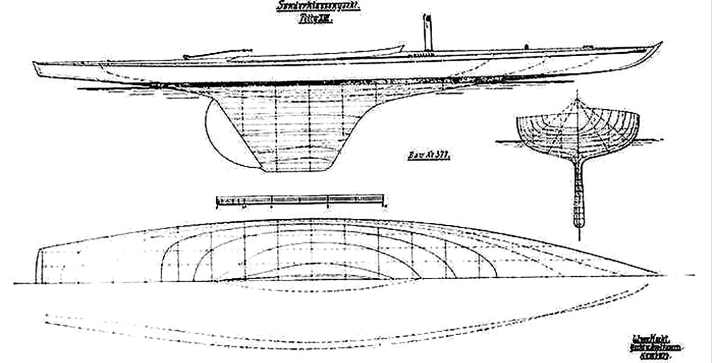Classic: Rendezvous with the special class yacht "Tilly"
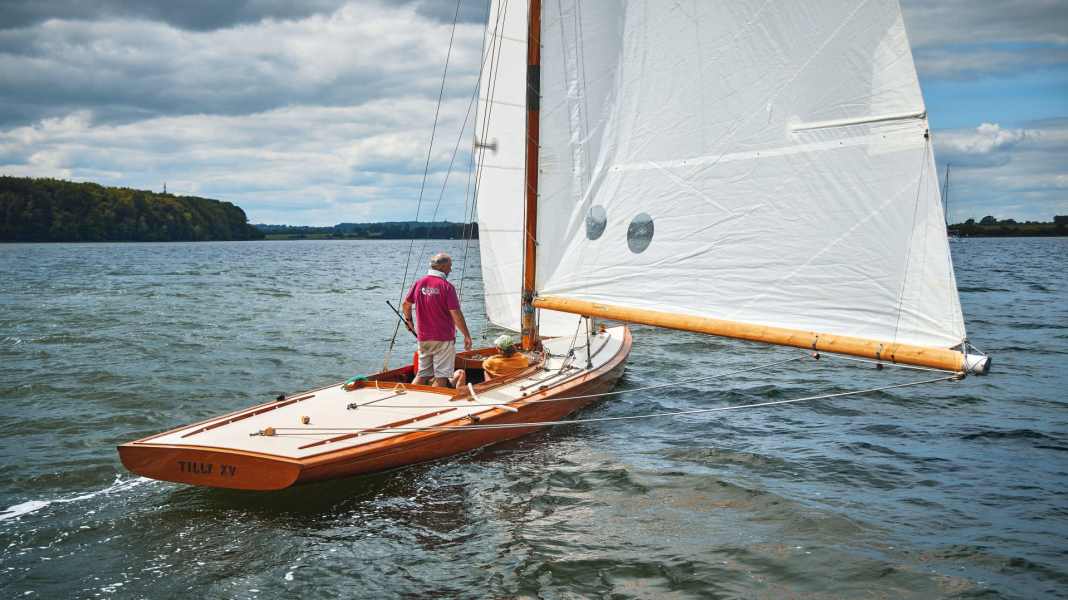
The graceful nautical antique lies on the water like a feather, the twelve metre long hull not even submerging half its length. But then the sails on the antique steep gaff rig rise into the air, and as the museum vessel lies on its side under the gentle press of the summer breeze, the waterline quickly lengthens.
And so the old lady gets into the race with just a hint of wind. Then she reacts agilely to the rudder or runs straight ahead unperturbed when it is released. And while her wooden odeur mingles with the slightly musty scent of the Schlei, its moving water surface plays a wondrous melody from a bygone era on the fragile resonating body of the hull.
For owner Siegfried Rittler and helmsman Jörg Mössnang, this trim stroke is actually a journey through time. Tomorrow they want to point the long, narrow bow towards the keel, the place where the regatta career of their historic yacht began 110 years ago. A career that has not yet come to an end.
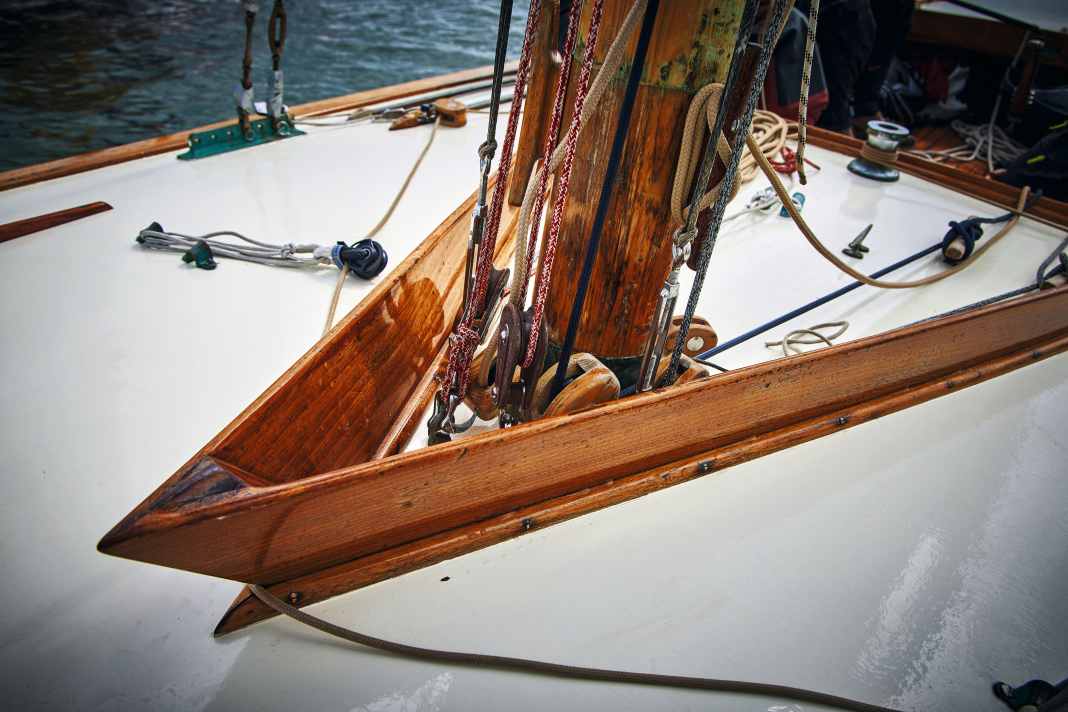




Her vessel is none other than the special class yacht "Tilly XV", with which the previous owners Prince Heinrich of Prussia, the brother of Wilhelm II and vice-commodore of the Imperial Yacht Club, and his friend, the Hamburg shipowner and chairman of the North German Regatta Association Richard Krogmann, sailed to victory at Kiel Week in 1912 and thus won the prestigious Samoa Cup in the special class. Ten years ago, the owner gave his "Tilly" back to her original condition as a gift for her centenary, and the restoration was so successful that he was honoured with the restoration prize by the Freundeskreis Klassische Yachten in the same year. Ten years later, they are here again and attend the Kieler Woche regatta for yachts of their type with the Rendezvous der Klassiker.
Mössnang and Rittler sit happily on the high edge and report on how they returned "Tilly" to her element for the first time after the extensive restoration. In Kiel, of course. And, of course, the first stroke took them to the Stollergrund, the notorious shoal where the gentlemen sailors on board the "Tilly" once proved that they could handle wind and weather. And a hundred years later, the rough waters still greet the classic with plenty of wind in the sails and spray on deck.
According to the pair, they were immediately impressed by the sailing characteristics under gaff rig. "And then we said," says Mössnang, "let's do it properly and sail in the fjord to the Kiel Yacht Club." Just like Prince Heinrich and co-owner Krogmann, they moored there after a day at sea, soaking wet but happy, and celebrated the "Tilly's" birthday on the club terrace.
It is the beginning of a new love affair with the old boat. After all, Rittler and Mössnang have fought side by side for regatta silver on board the "Tilly" for many years.
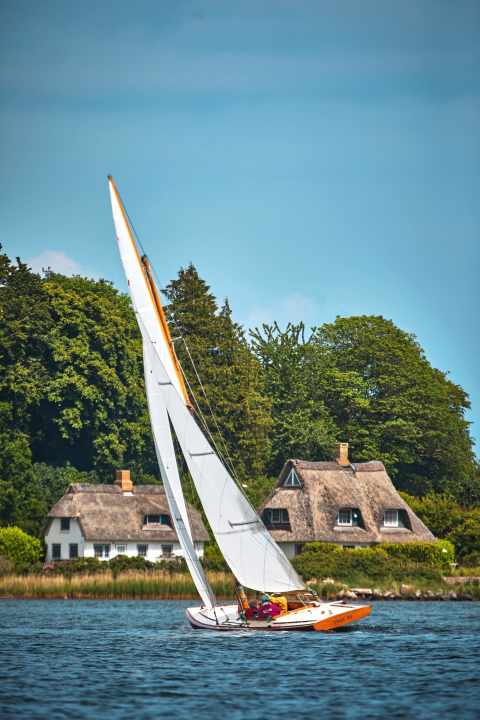
Owner Siegfried "Sigi" Rittler acquired the special class back in 1993, not realising what a gem of yacht history he would call his own in the future. Even then, Rittler began to take good care of his "Tilly". "I wanted to keep everything as original as possible," he remembers, recalling how the polyester coating was removed at the Michelsen shipyard on Lake Constance. The outer skin had to be repaired and given a solid veneer so that it looked like it used to after the natural varnish. The deck was also covered with linen and painted with oil paint in this first refit, true to the original.
However, in order to be able to compete with the special classes, all of which have been modified over the years, modern fittings and a 16 metre long high rig with three spreaders will soon be on board. To counteract the resulting leeward leeches, it has to be moved aft. A previous owner had already moved the rudder aft.
"We've gone through all the developments," says Mössnang. He sits at the curved tiller, which today once again protrudes from the centre of the cockpit floor, and says more to himself: "and won quite a lot". Rittler agrees with him. It had become downright boring. In the end, the "Tilly" just stood on the trailer and wasn't moved at all.
Until, shortly before her centenary, the idea of restoration comes up and gets the team going again. The two devoured everything they could get their hands on about the history of the special class. "Until now, this history wasn't really our focus," says Mössnang, who has since become an intimate connoisseur of the boats and their history.
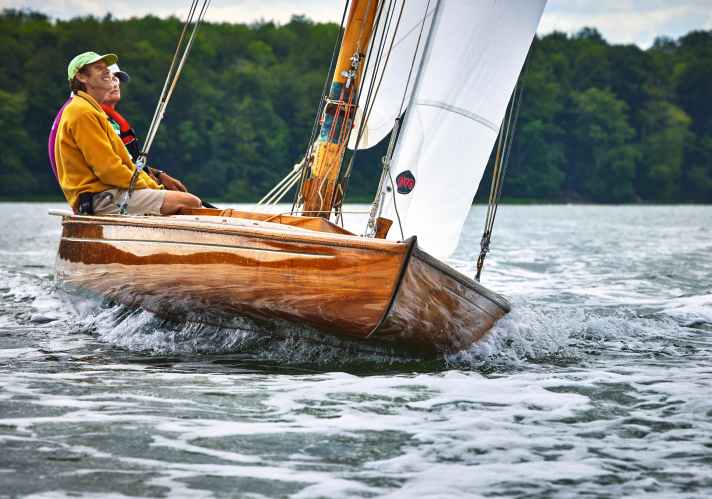
Now he learns that the special class is the first construction class in the world in which boats were sailed against each other without compensation, and the first internationally recognised regatta class ever. Its creation goes back to the suggestion of the English sailor Mr Quentin and the commitment of the sailing-enthusiastic German Emperor Wilhelm II in the years 1898 to 1899. In a meeting during Kiel Week in 1898, Mr Quentin was able to convince the regent of the idea of German-English international sailing competitions.
DSV President Adolf Burmester and shipbuilding engineer Prof Carl Busley were then commissioned by the Kaiser to develop a formula for the project:
Waterline length + maximum width + draught = maximum 9.75. The measured sail area must not exceed 51 square metres. The boats must have a plank thickness of at least 16 millimetres, the plan opening must not be longer than 2.5 metres and the weight must not be less than 1.83 tonnes. The model was the English 19-foot class. The construction price was also fixed: a maximum of 5,100 Reichsmarks. The class was to be sailed by three gentlemen sailors from the country in which the boat was built.
The gentleman sailor is an extinct species of the Wilhelmine era. He used tiller and sheet purely for pleasure and did not live from his own labour on land. At the birth of the special class, such wealthy amateur crews were a novelty - in the racing classes of the time, paid hands were common.
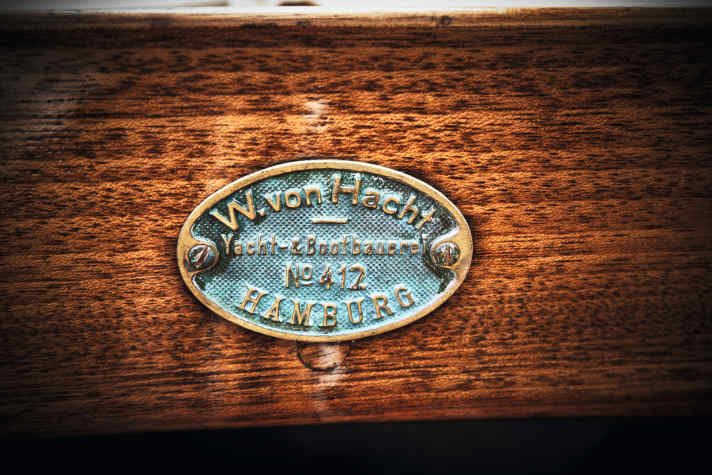
The project is an instant success. As early as 1900, in the first summer, 15 new builds start the battle for the trophy donated by the Emperor for the class. Soon special class yachts were sailing against each other in Belgium, Denmark, France, Spain and Germany.
The ships are inconspicuous at first. Compared to the "Tilly XV", they appear bulbous and have a long waterline. But the freedom of the formula quickly led to new developments. The maximum price sets limits, but some people know how to circumvent them. Richard Krogmann, for example, often has two or three new boats built for the upcoming season and decides in favour of the fastest one after extensive testing.
When the international metre formula is introduced, the special class is discussed at the German Sailing Conference. Kaiser Wilhelm II took part personally - as an advocate, as the class was already internationally recognised.
It is confirmed. Even though the planned regattas between German and English teams did not take place at the time, interest in the "oddballs" increased enormously with the regular German-American international competitions that began in 1906. Both among sailors and designers. And so, during these years, the abbreviations of the most renowned yacht designers of their time can be found under the cracks, whose lines push the formula to ever more extreme limits.
"Tilly XV", as Rittler and Mössnang also learnt during their research, marks a milestone in this development. It began in 1911 in the USA. At that time, Nathanael G. Herreshoff, who went down in the history of yachting as the Wizard of Bristol, proved with "Bibelot" that he really did know magic tricks. In order to keep the construction waterline of his design even shorter, he developed a concave bow. The "Bibelot" was a resounding success in the summer of 1911. The German Kaiser was delighted and acquired the ship as a model for new German designs.
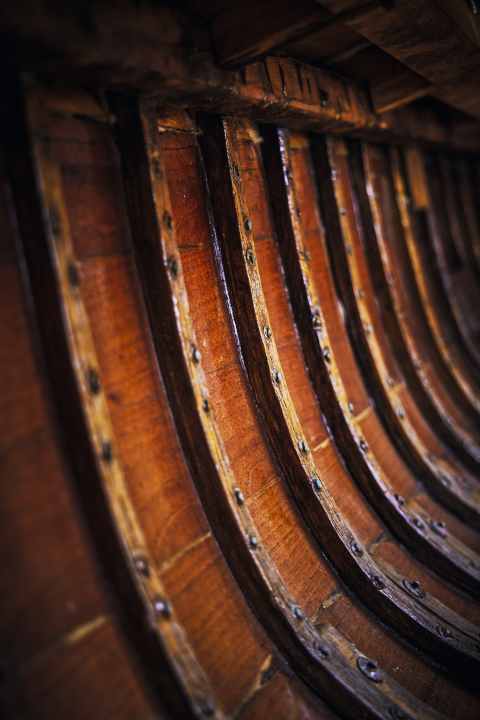
Willy von Hacht from Hamburg measures up the successful boat and develops the 15th of 17 special classes built for Krogmann between 1901 and 1913 called "Tilly", the nickname of his wife Mathilde. His good friend Prince Heinrich was always on board as co-owner and extremely successful helmsman.
After her brilliant performance during the Kiel Week in 1912, the 15th "Tilly" is sold to Lake Starnberg. After the war, the ship comes to Lake Wolfgangsee and changes hands several times until Sigi Rittler acquires it in 1993.
He likes sitting on board much more today than he did back then. Because the restoration to its original condition has opened the door to a whole new world for him with the classic events.
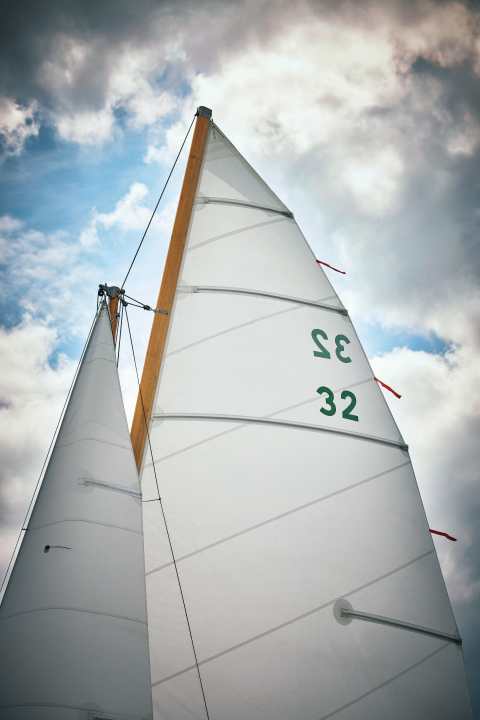
This reconstruction was not easy. There were only drawings of the model "Bibelot", the von Hacht shipyard no longer exists, and the thirty or so boats still sailing from the two hundred or so once built in Germany have all been modified in such a way that no useful references can be found for the intended purpose. "So we primarily looked for old photos," Mössnang recalls. "From these, we were able to recreate the rigging and fittings."
The old hull and the new rig are adapted to the condition of the year of construction under the hands of a boat builder on Lake Starnberg. "The first act was to replace the free-standing rudder with one attached to the aft keel edge," recalls helmsman Jörg Mössnang, who, as a trained sailmaker, even helped with the procurement of beige-coloured cloth.
When the freshly restored special class turned up in Laboe in 2012, where the classic ship community awards the annual restoration prize as part of the German Classics, it had an easy time of it. Right down to the galvanised wires, the owner presents his ship on its hundredth birthday just as it was when it was built, just a few cable lengths away from being chased around the buoys by prominent hands.
In the meantime, the galvanised wires of the rig have been replaced with grey Dyneema. But Rittler and Mössnang have also experienced all sorts of things with the new old "Tilly". "We've been out on the water a lot," says Mössnang, reporting on events in Cannes, Viareggio and Saint-Tropez on the Mediterranean, Flensburg and Kiel on the Baltic Sea, victories at the Rhine Week, Lake Zurich and Lake Constance.
However, they both agree that the strongest impressions came from overseas. The idea grew out of historical research and became an increasingly strong desire after the restoration. "In 1906, 'Tilly VI' was in Marblehead," explains owner Rittler, at the first German-American regatta. "And that's when we said we'd take the sister ship to America in 2016 for the 110th anniversary."
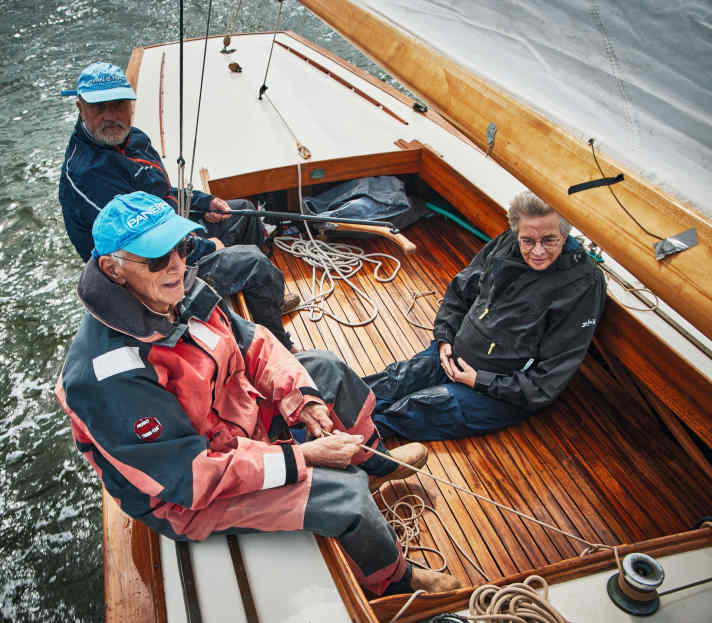
It's the time of year when the Panerai North American Circuit, a whole series of classic regattas, is organised on the east coast of the USA. It consists of races off Marblehead, Nantucket and Newport. The "Tilly XV" will be competing in all of them in 2016.
When the 30th Antigua Classic Week comes around the following year, another reason is found to ship the boat across the pond. And once again, the classic regattas of the North American Circuit see the special class at the start. The yacht bridges the waiting time as an exhibit in the Herreshoff Museum, where operator Halsey Herreshoff, the grandson of the magician, can briefly explain his grandfather's trick to his visitors on the living object.
They made many friends in the USA, says Rittler. "In this respect, we had come full circle, as we had already been sailing together to get to know each other and to foster German-American friendship."
A friend from that time is on board today. The American Carl Fast has often sailed with Rittler and Mössnang on "Tilly XV". And with the Duchess of Mecklenburg-Solodkoff, even the great-granddaughter of former rower Prince Heinrich is sitting at the tiller today and is delighted that this beautiful chapter of her family history has been preserved.
The enthusiasm shown by owner Rittler and his skipper Mössnang is really something very special. According to Mössnang, none of the remaining special class yachts have yet been persuaded to restore them to their original condition.
With "Tilly XV", which sailed ahead for years as a modified ship, he would no longer win a class regatta against the competition today. It doesn't bother him any more than it does owner Sigi Rittler: "I said goodbye to them and today I'm glad that we did it that way."
The special class
The special class was created in 1899/1900 on the initiative of a British sailor and at the instigation of the German Emperor Wilhelm II and is the first internationally recognised design class in which regattas were held across national borders in which the boats could sail against each other free of charge. It thus marked the beginning of international competitive sailing.
According to the construction formula, the sum of the length of the waterline, the width and the draught must not exceed 9.75. Only amateurs were permitted as crew.
Her heyday did not end until the beginning of the First World War, although the international metre formula dominated Olympic sailing from 1906. The "Tilly XV" is one of 17 special class yachts built between 1901 and 1913 for friends Prince Heinrich of Prussia and Richard Krogmann. She was modelled on the Herreshoff design "Bibelot", on which a concave bow allowed an extremely short waterline for the first time, which gave scope for more hull length. This had a positive effect on speed when the boat was in position.
Special class yacht "Tilly XV"
- Designer/builder W. v. Hacht
- Building material mahogany/oak
- Year of construction 1912
- Restoration 2012
- Hull length 12.00 m
- Waterline length 5.65 m
- Width 2.22 m
- Draught 1.5 m
- Displacement 1.87 tonnes
- Sail area 50.95 m²
